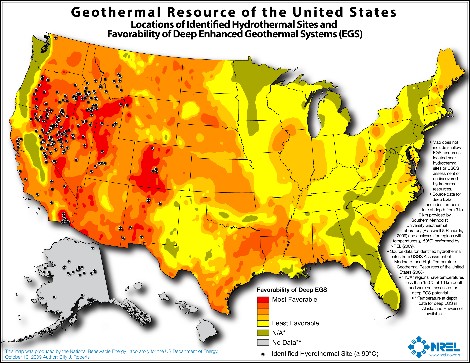
Geothermal Power: The Forgotten Renewable
When renewable energy is discussed most people think of solar and wind power as the two prime examples; geothermal energy is overlooked as a carbon-free power source. Unlike, solar and wind, geothermal power has been providing round-the-clock electricity in the United States for over fifty years. The first industrial geothermal plant in the US was built in 1960 in The Geysers, California.
Geothermal power, unlike wind and solar, is able to run consistently throughout the day, and is able to provide a reliable baseload to the electricity grid. Geothermal technology uses the heat of the earth to power turbines and generate electricity. Current geothermal plants at The Geysers provide approximately 60 percent of the power for the California coastal region spanning from the Golden Gate Bridge to the Oregon Border. Geothermal energy is expected to produce 220 trillion Btu in 2015 in the US. In fact The United States is the world leader in geothermal electricity production. Twenty two percent of all geothermal electricity in the world is produced in the United States.
Iceland has the largest percentage of domestic electricity supplied from geothermal power. Geothermal plants provide approximately 26 percent of all electricity in Iceland. In addition, geothermal power is also used to directly generate heating and hot water in 87 percent of all buildings in Iceland. Iceland has copious abundant geothermal electricity at affordable prices, which enables it to competitively host green projects such as Carbon Recycling International which turns the greenhouse gas carbon dioxide into methanol fuel, effectively creating zero-emission fuel. The cost efficiency of Iceland’s renewable resources also allow it to host a large energy-intensive aluminum smelting industry that is tenth largest in the world despite having a population of only 330,000
The US has significant geothermal resources throughout the western states, Hawaii and Alaska. Many sites have only begun to be exploited and is a large potential for geothermal growth in the Western United States; especially in rural areas, which can provide affordable distributed energy. As technology continues to improve geothermal power will increasingly become a valuable tool to combat climate change.





